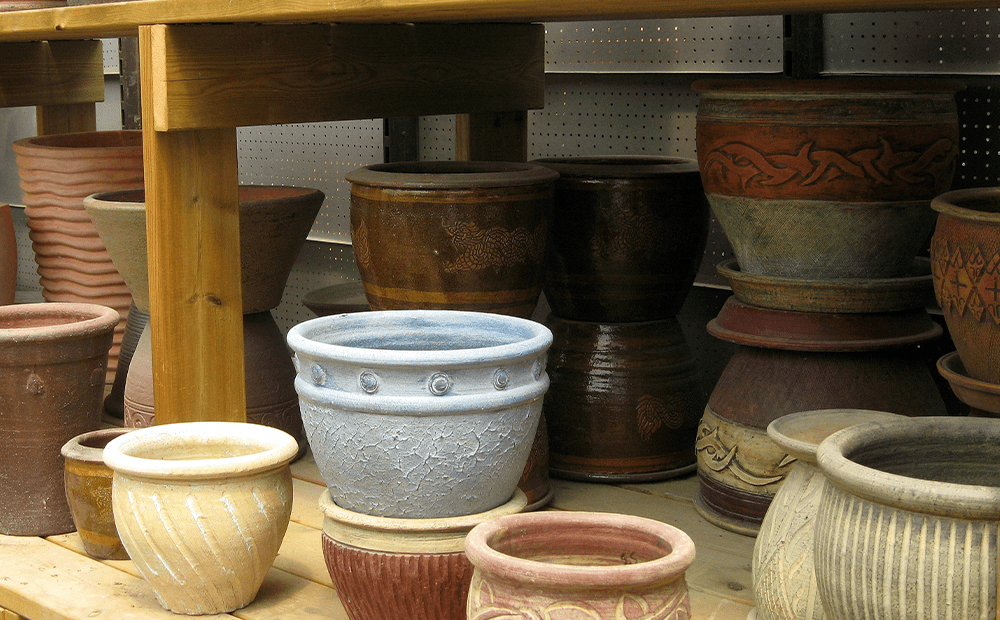HOW TO WINTER-PROOF YOUR GARDEN POTS AND PLANTERS
Cleaning out and winter-proofing garden pots and planters is an often overlooked task that is important. Cleaning your pots and planters can help keep your plants healthier by interrupting pest and disease life cycles. Besides that, winter-proofing your pots, containers, and planters also helps protect your planters to last you for as many years as possible.
Freeze and thaw cycles through spring and winter are hard on planters, regardless of the material they’re made of. Too much exposure to extreme weather makes planters more brittle and causes the materials to wear faster, as well as colors to fade. A little water in concrete or clay planters that then freezes can cause a broken or cracked planter. Your planters are an investment; cleaning and winter-proofing them will protect your investment and keep them looking great for years to come!
How to Clean Your Planters
After you’ve removed the plants from your planters in the fall, dump out the soil, and get ready to clean. You’ll need:
A stiff scrub brush
Dish soap
Water
Disinfectant (optional)
Before you get anything wet, use your scrub brush to scrub out as much of the dirt in your pots as possible before washing. This way, you won’t have to change your water as much or send too much soil down the drain.
Give your pots a good scrub, inside and out with soapy water, and then rinse them. If you have hard water and mineral build-up on your planters, soak them in white vinegar and water until the build-up dissolves. A mix of 1 part vinegar to 4 parts water is usually enough. Leave the planters to soak in the mixture for 10-30 minutes or until the build-up is gone. Finally, let your planters dry completely before putting them away for the winter.
How to Store Your Planters
Your planters will last longest if they’re stored somewhere that doesn’t fluctuate too much in temperature. Particularly terra cotta pots really should not be stored outdoors. Since terra cotta and clay are porous, they may retain moisture, even when they feel dry. They can absorb moisture from humidity in the air, even if they do not touch snow or rain, which will likely cause them to crack when the temperature drops overnight.
If you have a shed or garage, that’s a perfect place to store your pots. Stack your dry pots together in a corner, and leave them there for the winter. If you have to store pots and planters outside, put them close to a building, stack them upside down, and then cover them with a tarp or plastic sheeting to keep snow and rain off. If you’re storing lighter, plastic pots outside, set something heavy on top of your stack to keep them from blowing away.
Because of their weight, you shouldn’t stack ceramic, cement, or terra cotta pots more than 3-4 together. It’s a good idea to put some sort of material protector between the planters, like a piece of fabric, styrofoam, bubble wrap, or cardboard, so they don’t bang against each other and chip or break.
If you need supplies to help protect your pots and planters for the winter, or if you need to replace some worn-out or broken planters, stop by Dammann’s Garden Co. and check out what’s in store!




